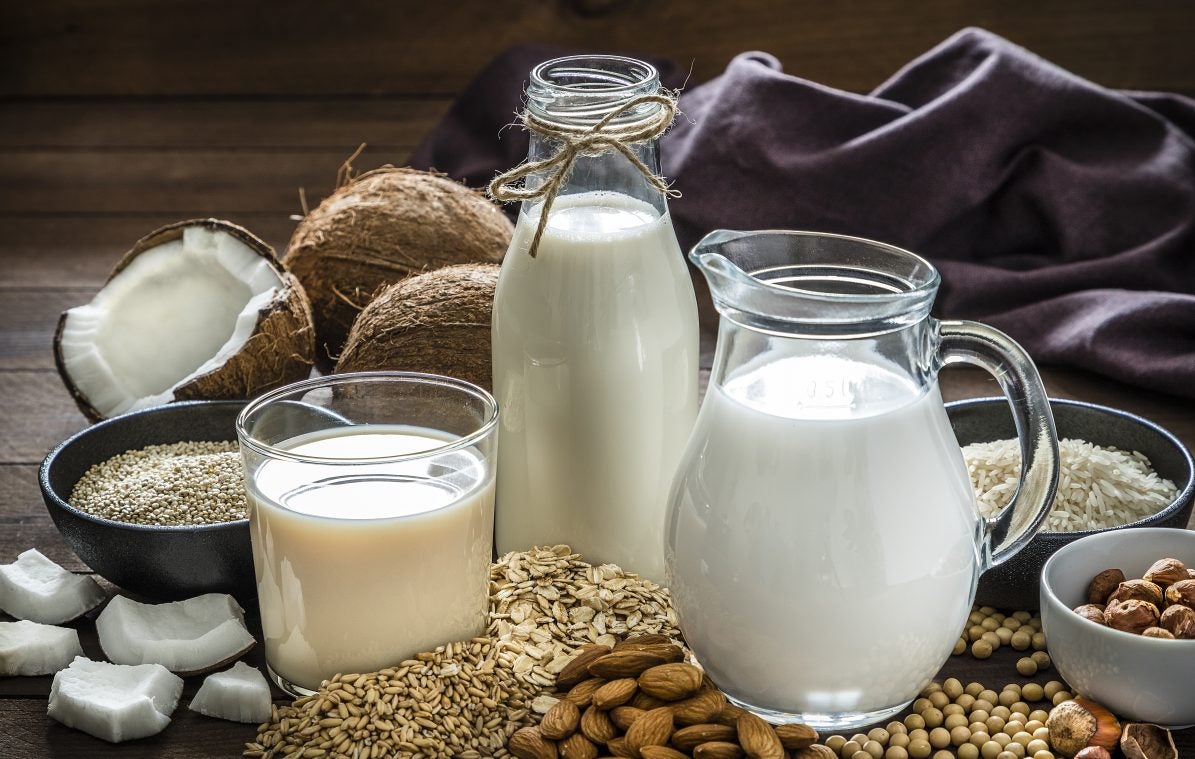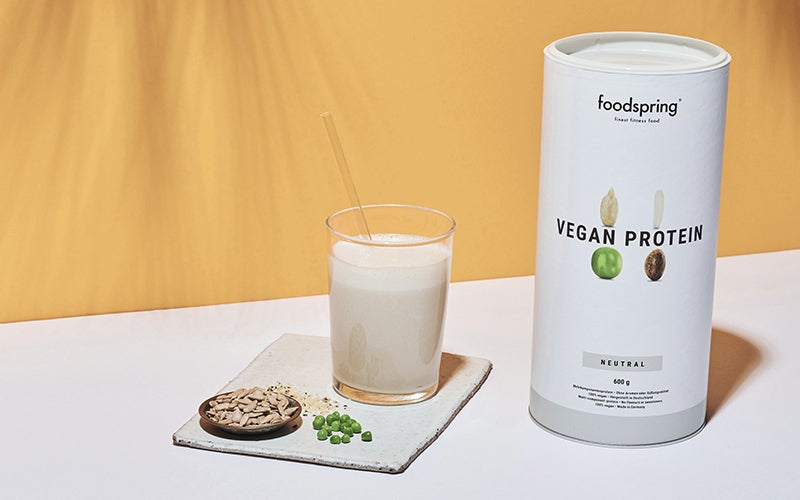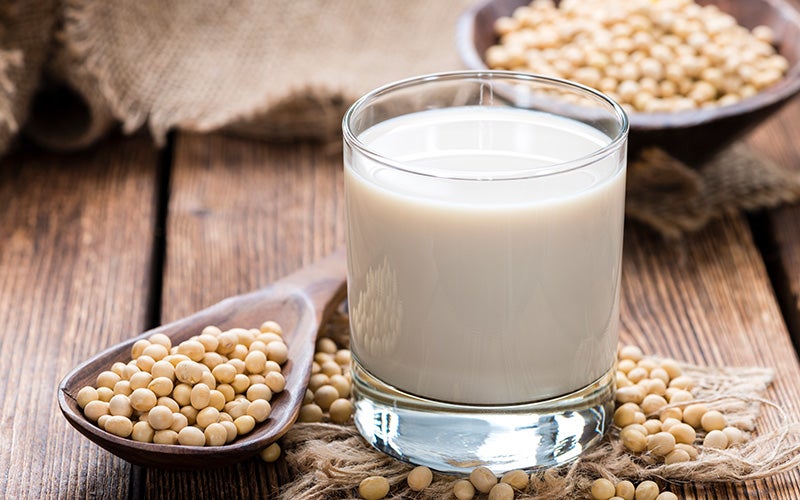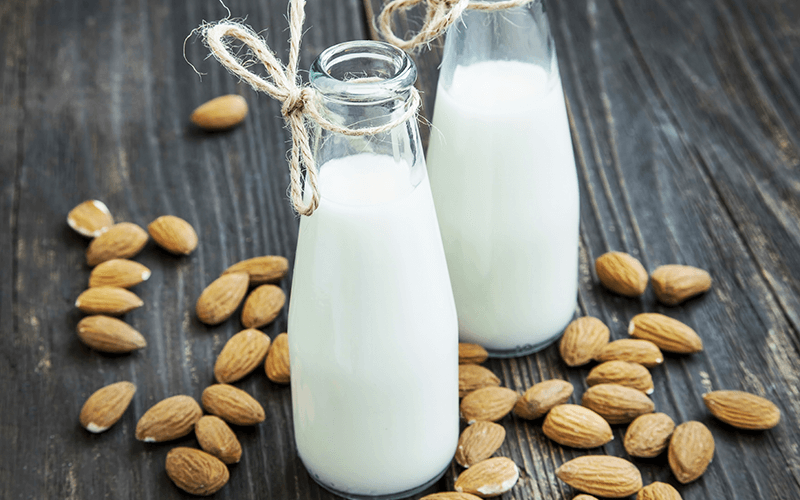Vegan milk: Facts, tips, and all your options in one place
 ©carlosgaw
©carlosgaw
Which milk alternatives are vegan? What is vegan milk made out of? Which one makes your coffee the creamiest? Let’s get into everything you need to know about plant-based milks!
Oat milk, almond milk, soy milk, and rice milk are becoming increasingly popular as people ditch dairy and look for alternatives to cow’s milk. Strictly speaking, of course, vegan milk is not milk at all. According to a European Court of Justice ruling, only “products from milking processes” can be called milk. That’s why vegan milk is technically called “milk substitute” or “milk alternative.” In the supermarket, you’ll often find them labeled as plant-based milk alternatives.
What is Vegan Milk?
Vegan milk is an umbrella term for milk-like liquids made from plants. They’re similar to dairy milk in their color and consistency and can be used for cooking and baking in the same way. Vegan milks can be based on legumes, grains, or nuts.
In principle, milk substitutes are relatively neutral in flavor, just like cow’s milk. Some drinks are also sold in flavored varieties like chocolate or vanilla, but these versions usually contain a lot of added sugar.
Our tip: Mix your milk alternative with your favorite Vegan Protein, for a flavor boost that will also keep your muscles happy.Check out our vegan protein

How is Vegan Milk Made?
Vegan milk is produced industrially in a process that can be easily replicated at home with a blender. The basic process is always the same: Soak the main ingredient, i.e. soy, almonds, rice, or other nuts, hemp seeds, legumes, or grains and then blend it, or grind it first and then mix it with water.
When you’re making it yourself, you’re basically already done. For a smoother product, pour the milk through a nut sieve or kitchen towel to separate the liquid from the solid raw material. But don’t throw the solids away! They’re a perfect ingredient for a porridge or as a base for a vegan cookie dough.
Industrial products have a few more steps to go. The milk is usually boiled or, in some cases, fermented. For many grain milks, for example, the starch is converted to sugar in a fermentation process; that’s how rice milk, for example, gets its naturally sweet taste. After this process is completed, any supplementary vitamins and minerals, like vitamin d, are added.
Depending on the drink and manufacturer, some plant-based milk alternatives are enriched further with oils and salt before being homogenized and ultra-pasteurized for preservation, just like cow’s milk.
An Overview of Alternatives to Dairy Milk
Non-dairy milks can be divided into three basic categories: dairy-free milks from legumes, nut milk, and milk from grains. Vegan milks made from legumes, like soya milk, usually have a higher protein content, while milk from grains is sweeter, and nut milk is particularly creamy and – depending on the type of nut – includes comparatively high levels of healthy omega-3 fatty acids.
Just like cow’s milk, you can also cook and bake with non-dairy milk. It’s up to you to decide which milk is best for you: choose the flavor and texture that’s best for any given recipe.

Vegan Milk from legumes: more than just soy milk
One of the most popular milk alternatives made from legumes is soy milk. Most non-dairy milks made from legumes have a high protein content, good foam quality, and micronutrients like vitamins D. Another plus point is that many of the legumes used can be grown near you and are often farmed organically.first
Soy milk: the oldie but goodie among milk alternatives
Soy milks were among the first milk alternatives to find a permanent place on the menus at big-city cafés catering to customers looking to ditch dairy. Soya milk naturally foams well, has a relatively neutral taste, and also looks good in a cappuccino. Soybeans have folic acid, mostly unsaturated fat, and high-quality plant-based protein. Soya milk usually compares the best to cow’s milk in terms of taste and consistency.
Lupin milk: regional newcomer
Lupin milk is relatively new on the non-dairy milk market. Lupins are legumes that can be grown all across the UK. They also contain about 40% protein, surpassing even soybeans. Lupin milk has a relatively strong taste on its own, but it also has a creamy texture and foams well. Does it go well with coffee? Try it and find out for yourself!
Pea milk: European protein star
Pea protein already has a reputation as a high-quality protein powder in the vegan fitness scene. It’s this protein power that makes milk substitute made from peas a good choice for your fitness nutrition plan. Peas in coffee don’t sound very good? True! But really, you don’t taste it much at all.
And because peas are grown regionally and are relatively easy to process, pea milk is one of the most sustainable plant-based milk alternatives.
Vegan Milk from Grains
Oat milk
Oat milk is overtaking soy milk as the most popular milk alternative for cappuccinos. During the production process, the natural grain starch is converted into sugars, which is why it tastes a lot sweeter than other vegan milks. At the same time, it scores points with healthy fiber and natural calcium. Want to kick your coffee sugar habit? Then oat milk should be your go-to milk substitute!
Spelt milk
Like lupins, spelt can also be grown in the UK. If you buy milk made from spelt grown near you, it makes it an even better choice for the climate. Spelt milk tastes relatively strongly of the grain which is why it’s less popular in coffee. But that’s also what makes it all the better for muesli.
Rice milk
Rice milk is the perfect milk substitute for people with nut allergies. Rice is usually easy to digest and is a good source of energy, but it does not contain significant amounts of fat, fiber, or other nutrients.
The taste of this dairy-free milk is also rather neutral but not that creamy. That’s why it’s better for cooking or cereal than in coffee.

Vegan milk from nuts
Almond milk: the classic nut milk
Almond milk has a deliciously nutty flavor that’s kind of like marzipan. At the same time, it is gluten-free and super delicious especially in sweet recipes, mueslis, and shakes with its nutty note. Pure almond milk tends to form clumps in coffee so almond-oat or almond-soy drinks are the better healthier alternative. It’s still important to remember that only about 5-10% of the almond actually ends up in the almond milk, so not that many nutrients are left.
Hazelnut milk: better than a chocolate spread!
Why is it better? Quite simply, hazelnut milk tastes great: it’s smooth, creamy, and intensely nutty without any added sugars. And unlike almonds and cashews, hazelnuts probably grow near you. In the fall, you could even gather them yourself and make your own hazelnut milk from fresh nuts.
Cashew milk: the extra creamy one
Cashew milk is an integral part of a healthy vegan diet. Cashews have a versatile amino acid profile and many healthy fats. Cashew milk usually doesn’t foam up very well which is why it isn’t so great for coffee. On the other hand, this plant milk is naturally very creamy which makes it good for cooking and baking when you need a creamy texture and high fat content without dairy products.
Tip: Cashew milk mixed with yeast flakes creates a delicious and healthy base for savory casseroles and sauces. It is a bit reminiscent of cheese sauce, but it’s easier to digest and – thanks to its better percentage of unsaturated fats – healthier.
Coconut milk: the legal one
You might already know coconut milk from Thai or Indian cuisine; it’s also the only plant milk that can legally be called “milk.” Coconut milk gives soups and desserts like rice pudding and fruit parfaits that little extra flavor boost.
Coconut milk is made from pressed coconut flakes and contains sizable amounts of fat, but also potassium, sodium, and magnesium.
Why is Vegan Milk so Popular?
Plant-based alternatives to dairy milk are not only popular with vegans; they’re also very popular with flexitarians and other people looking for a healthier alternative to dairy milk. According to the Defra Family Food Survey, per capita consumption of cow’s milk in the UK has fallen 50% compared to 1974. At the same time, sales of plant-based milk have grown to almost 5% of all sales by volume. But why are they so popular? Here are two top reasons:
#1 Plant-based milk is more climate-friendly
Since the nutrients are no longer making the detour via the cow, plant-based milk substitutes automatically use up fewer resources: feed cultivation, animal husbandry, breeding, and water use all have a major impact on milk’s carbon footprint and environmental impact due to the pesticides involved and pollution of drinking water in feed-growing countries.
But not all plant-based milks are the same. Almond milk made from Californian almonds definitely has a significantly larger carbon footprint than oat milk made from European organic oats. On average, soy milk and oat milk perform best in terms of water and land use per liter.
#2 Milk substitute as a solution for lactose intolerance.
Lactose intolerance is not an issue with milk substitutes. Coconut milk, soy milk, hemp milk, and plant milks made from nuts are also gluten-free. In short, with a little trial and error, you can find the right milk alternative for any intolerance.
Is Vegan Milk Healthy?
As with any food, it depends on the quality and nutritional values and how they fit into your overall nutrition plan. Basically, organic ingredients are usually better and you should recognize all the ingredients on the – as short as possible – ingredient list.
Always check the ingredients in your plant milk because sweeteners, artificial flavors, etc. are unnecessary in high-quality alternatives to dairy milk. But vegetable oil or acidity regulators can also create a creamy consistency, especially in grain milks, and are generally harmless.
Many plant-based drinks are enriched with calcium and vitamins, especially vitamin B12 or vitamin D.
How healthy the milk substitute is always depends on the advantages of the particular raw material: soy has good nutritional values and usually fewer calories than cow’s milk while oat milks are a source of beta-glucan, iron, and biotin. Almonds contain potassium and lupins have a high protein content and also various micronutrients, while pea protein has a versatile amino acid profile.
These nutritional considerations are why we decided to base our new and improved Vegan Protein on pea protein. To perfect the amino acid profile, we’ve refined it with sunflower and chickpea protein.All the aminos you need
By the way, soya milk comes close to cow’s milk in its nutritional values per liter and also scores points with fewer calories and often comparable calcium levels.
Making vegan milk yourself: a crash course
Making your own vegan milk is child’s play, saves on packaging, and, last but not least, is also cheaper. It’s easy to make vegan milk at home from soy, oats, almonds, or even peas. All you need are:
- the main ingredient, e.g. soybeans, oats, or almonds
- a blender
- a nut sieve or cotton kitchen towel
Instructions
- Soak nuts or legumes in water for about 4 hours.
- Rinse them thoroughly. For milk from grain or cereal, use clean unsoaked oats, spelt, or rice flakes.
- Put your main ingredient in a blender with about four times the amount of water and blend on high for about two minutes.
- Let everything settle for about a minute, then blend again for 2 minutes on medium.
- Put a nut strainer or cotton kitchen towel over a large bowl and pour the milk through the strainer or towel into the bowl.
- Use the leftovers in the cloth or strainer, also called the pulp, for baking or in porridge.
Every recipe for homemade milk substitute varies. There is no right or wrong: use more or less water to get the consistency you like best. Or mix your oat milk or rice milk with cocoa, cinnamon, or cardamom to make your own spiced milk.
Tip: A dash of oil makes your homemade milk substitute even creamier. It will keep for about 2-3 days in the refrigerator. It is possible that leftover pulp will settle to the bottom, so shake your homemade vegan milk before you pour it.
Which Vegan Milk Tastes Best?
This is definitely a matter of taste and also depends on what you want to use the milk alternative for. Almond milk and other nut milks are perfect for baking or on cereal. Soy milk and other legume-based milk substitutes are ideal substitutes in coffee. Grain milks made from rice and spelt or hemp milk taste like their respective raw materials and are perfect for baking or cooking.
Our tip: Try your way through the categories and also give different brands a chance. The almond milks from two different companies can taste completely different. It’s also good to test milk substitutes in different contexts: for cereal, baking, cooking, coffee, and protein shakes. Maybe you like rice milk in cereal but oat milk in coffee? Try them both and find out!
Vegan Milk Foam? Go for Almond Milk or Coconut Milk!
Plant milk generally has a slightly lower protein and fat content than cow’s milk. The higher the protein content, the better the milk foams. That’s why milk alternatives made from legumes foam better. Almond milk also foams well thanks to its fat content, but you won’t get rice milk frothy even with the best technique. If you want oat milk in your coffee, it’s best to find a higher-fat barista version.
Conclusion
- In addition to soy milk, oat milk, hemp milk, and almond milk, there are various other vegan milks that have different flavors, advantages, disadvantages, and uses. It’s worth trying multiple different varieties.
- Milk alternatives based on legumes have the advantage of a high protein content.
- Vegan milk is easy to prepare at home in less than 5 minutes.
Sources for this article
We at foodspring use only high-quality sources, including peer-reviewed studies, to support the facts within our articles. Read our editorial policy to learn more about how we fact-check and keep our content accurate, reliable, and trustworthy.
- J Poore, T Nemecek: Reducing food’s environmental impacts through producers and consumers. Science 01 Jun 2018:Vol. 360, Issue 6392, pp. 987-992 DOI: 10.1126/science.aaq0216 https://www.tagesschau.de/wirtschaft/unternehmen/ernaehrung-milchersatz-vegan-101.html (Stand 13.07.2021)





























